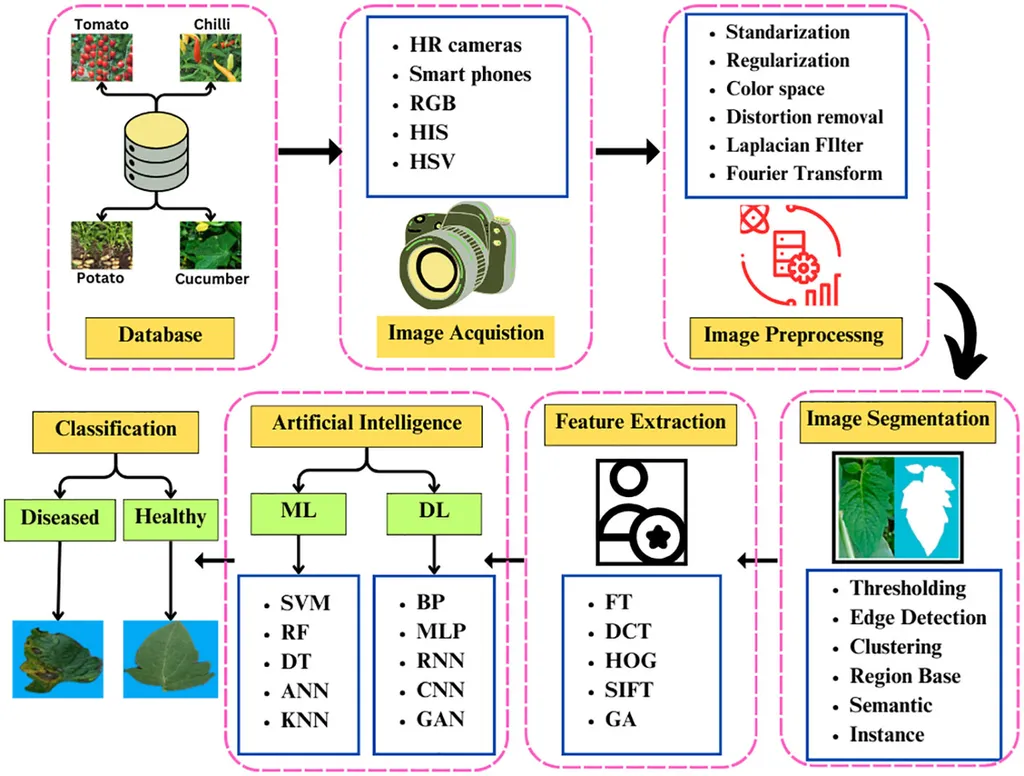In the relentless pursuit of sustainable agriculture, researchers have developed a novel approach to plant disease detection that combines the best of traditional machine learning and deep learning techniques. This innovative method, detailed in a recent study published in *Frontiers in Plant Science*, promises to revolutionize how farmers and agronomists identify and manage plant diseases, potentially transforming the agricultural landscape.
The study, led by Shtwai Alsubai from the College of Computer Engineering and Sciences at Prince Sattam bin Abdulaziz University in Saudi Arabia, introduces a hybrid model that leverages ResNet-based feature extraction and Principal Component Analysis (PCA) to train classical machine learning (ML) classifiers with Deep Neural Networks (DNN). This fusion of techniques aims to address the limitations of conventional disease detection methods, which are often time-consuming, subjective, and unsuitable for large-scale monitoring.
“Our goal was to create a system that is not only accurate but also scalable and robust,” Alsubai explained. “By combining the interpretability of classical ML with the power of deep learning, we’ve developed a framework that can handle the complexities of plant disease detection more effectively.”
The researchers tested their hybrid model on the PlantVillage dataset, which includes a variety of crop-disease pairs. Among the five hybrid models implemented, the Logistic Regression (LR)+DNN hybrid emerged as the most accurate, achieving a classification accuracy of 96.22%. This performance surpasses existing benchmarks and demonstrates the model’s potential for real-world applications.
One of the standout features of this hybrid approach is its robustness to class imbalance and its ability to maintain training stability. This is crucial for practical deployment in diverse agricultural settings where disease prevalence can vary significantly. Additionally, the model’s interpretability, enhanced by LIME-based analysis, allows for better understanding and trust in the diagnostic process.
The implications for the agriculture sector are profound. Timely and accurate disease detection can lead to more precise application of pesticides, reducing overall usage and contributing to sustainable farming practices. “This technology can help farmers make informed decisions quickly, ultimately improving crop yields and food security,” Alsubai noted.
The study’s findings suggest that the hybrid ML+DNN paradigm could become a cornerstone of intelligent smart sensing in agriculture. As the world grapples with the challenges of climate change and increasing food demand, such advancements are vital. The research opens up new avenues for developing scalable and transparent disease recognition frameworks, paving the way for more efficient and sustainable agricultural practices.
In the broader context, this work highlights the potential of integrating traditional and modern machine learning techniques to solve complex real-world problems. As the field of agritech continues to evolve, such interdisciplinary approaches will likely play a pivotal role in shaping the future of agriculture.

